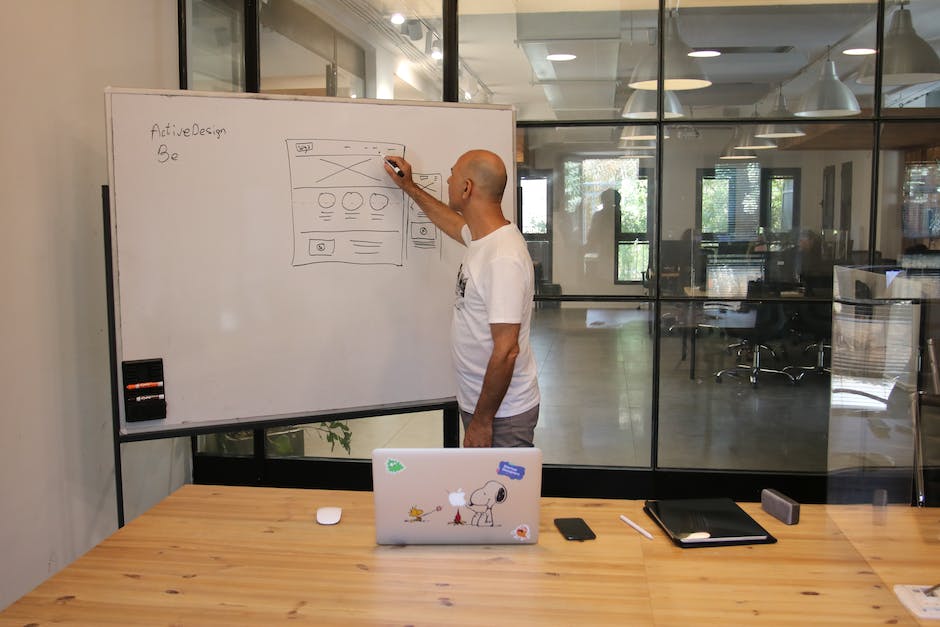As the digital world continues to evolve at a rapid pace, the demand for UI (User Interface) Designers is on the rise. In this tech-driven era, the role of a UI Designer is crucial in shaping the way we interact with digital platforms. They are the architects behind the look and feel of websites and apps, ensuring a seamless and intuitive user experience. The field of UI Design offers numerous opportunities for creative individuals who have a knack for problem-solving and an eye for design.

Understanding UI Design
At its core, UI Design is about creating visually appealing and functional interfaces for digital products such as websites, mobile applications, and software programs. It focuses on aesthetics – layout, color schemes, typography, and interactive elements – all of which contribute to the overall user experience.
The impact of effective UI Design extends beyond aesthetics. It plays a vital role in enhancing user satisfaction by making interactions smooth, efficient, and enjoyable. A well-designed user interface can significantly boost user engagement and drive business success.
The Role of a UI Designer
A UI Designer’s job is multifaceted. They are responsible for designing and implementing the visual and interactive elements of a digital product that users engage with. This involves understanding user needs, creating design concepts, prototyping interactive elements, and collaborating with UX (User Experience) Designers and Developers to bring their designs to life.
Being successful in this role requires a diverse set of skills. From a strong understanding of design principles and proficiency in design software to a keen eye for detail and the ability to think from a user’s perspective – all are crucial in creating user interfaces that are not just visually appealing but also functional and user-friendly.
Path to Becoming a UI Designer
So, you’re interested in becoming a UI designer? That’s a great choice! But where should you start? While there’s no single path that guarantees success in this field, most UI designers follow a somewhat similar trajectory. Let’s explore this further.
Educational Requirements
Although there’s no strict educational requirement to become a UI designer, having a background in design, computer science, or a related field certainly helps. Many professionals in the field hold degrees in these disciplines. But don’t worry if you come from a different background! There are many online courses and bootcamps that can help you grasp the fundamentals of UI design.
Building a Portfolio
Building a portfolio is crucial for any budding UI designer. This is your chance to showcase your skills, creativity, and understanding of UI principles. But what should you include in your portfolio? It’s a good idea to include a variety of work that demonstrates your versatility and range. Remember, quality trumps quantity. It’s better to have a few excellent pieces than a lot of mediocre ones. Don’t forget to highlight the process behind your designs, not just the final product.
Gaining Experience
Experience is a key factor in landing a UI design job. But how can you gain experience if no one will hire you without it? One way is through internships. These provide valuable on-the-job training and can often lead to full-time positions. Freelance projects are another great way to build experience and can be found on various online platforms. Volunteering your skills for a non-profit or local business can also provide practical experience and add valuable projects to your portfolio.
Necessary Skills and Knowledge for a UI Designer
As a UI designer, you’ll need a specific set of skills to succeed. These can be divided into two categories: technical skills and soft skills.
- Knowledge in UX design
- Proficiency in design software like Sketch, Figma, or Adobe XD
- Understanding of layout principles
- Good grasp of typography
- Ability to create interactive prototypes
- Knowledge in HTML, CSS, and JavaScript
But that’s not all! Soft skills are equally important. These include:
- Excellent communication skills: You’ll need to communicate your ideas and designs effectively to your team and stakeholders.
- Problem-solving abilities: Design is all about solving problems. You’ll need to be able to think creatively to find solutions.
- Attention to detail: UI design requires a keen eye for detail. From alignment to color choices, every little detail matters.
- Collaboration: You’ll often be working as part of a team, so being able to collaborate effectively is crucial.
- Empathy: A good UI designer empathizes with users and strives to create designs that meet their needs.
While this list may seem long, don’t be daunted! These skills can be learned and honed over time. Remember, every expert was once a beginner.
The Importance of Continual Learning
In the ever-evolving world of technology, staying at the top of your game is crucial. For UI designers, this means constantly updating their skills and knowledge. But why is this so important?
Firstly, digital trends change rapidly. What was cutting-edge yesterday may be outdated today. Therefore, UI designers need to be aware of these shifts to create interfaces that are in line with current user expectations.
Secondly, new tools and technologies are being introduced all the time. These can enhance productivity, improve design capabilities, and offer new ways to solve problems. Staying updated with these advancements can give you an edge over others in the industry.
Lastly, continual learning allows you to grow as a designer. It opens up new avenues, helps you tackle complex projects, and makes you a more versatile professional.
Networking and the UI Design Community
Have you ever considered the benefits of networking within the UI design community? Being part of a professional community not only provides moral support but also opens up opportunities for learning and growth.
Joining relevant professional associations, for example, can offer a wealth of resources. These might include training programs, webinars, articles, and industry reports that can help you stay updated with the latest trends and technologies.
Attending industry events and forums, both online and offline, is another excellent way to network. These platforms allow you to learn from experienced professionals, share your ideas, get feedback, and even find potential collaborators for your projects.
Online forums and social media groups are also a treasure trove of information. Here, you can ask questions, share your work, gain insights, and learn from the experiences of other UI designers from around the world.
Moreover, networking can open doors to job opportunities. Many positions are filled through referrals and personal connections, and a strong network can give you an advantage when you’re looking to advance your career.
So, are you ready to connect, learn, and grow?

Preparing for a Job as a UI Designer
As you embark on your journey to become a UI designer, it’s crucial to understand that preparation is key. Knowing what to expect in job interviews and how to present your skills and experience effectively can make all the difference. So, what can you do to best prepare?
First and foremost, you need to familiarize yourself with common interview questions for UI designers. This will not only help you anticipate the questions but also allow you to prepare thoughtful and well-articulated responses. Below is a table outlining some potential interview questions along with tips on how to answer them effectively.
| Interview Question | Tip for Answering |
|---|---|
| Can you describe your design process? | Highlight your understanding of the UI design process, from understanding the user requirements to creating wireframes and prototypes. |
| What is your experience with design software? | Discuss your proficiency in key design tools such as Sketch, Adobe XD, and Figma, providing examples of projects you’ve completed using these tools. |
| Can you provide an example of a design problem you faced and how you solved it? | Share a specific instance where you faced a design challenge and describe your problem-solving process, emphasizing your critical thinking and creativity. |
| How do you handle feedback and revisions? | Stress your openness to feedback and your ability to incorporate changes in your designs, demonstrating your flexibility and commitment to collaboration. |
The Future of UI Design
Now that we’ve covered how to prepare for a job in UI design, let’s look forward. What does the future hold for this field?
Like many areas in the tech industry, UI design is continually evolving. With the advent of new technologies, the expectations and demands from UI design are changing. The growing focus on creating more user-friendly and intuitive interfaces is driving innovation in this sphere.
One significant trend is the integration of AI and machine learning in UI design. This is opening up new possibilities for personalization and predictive design, creating interfaces that can adapt to the individual user’s needs. This means that, as a future UI designer, you’ll need to stay abreast of these emerging trends and continually update your skills and knowledge.
Moreover, the rise of voice user interfaces (VUIs) and virtual reality (VR) poses exciting challenges and opportunities for UI designers. How can we create effective, intuitive interfaces when the user can’t see a screen? These are the kind of questions that will shape the future of UI design.
In conclusion, the field of UI design offers a rewarding career path with numerous opportunities for growth and creativity. As technology continues to advance, the role of the UI designer will become increasingly important in creating digital experiences that are not only functional but also enjoyable. So are you ready to take the leap and shape the future of user interfaces?
